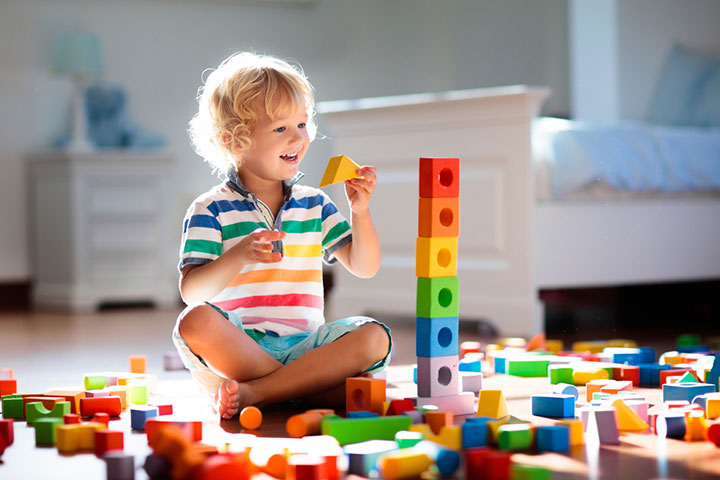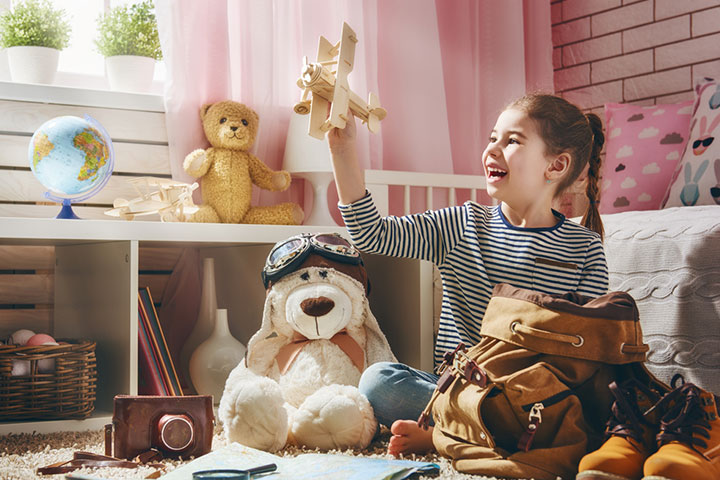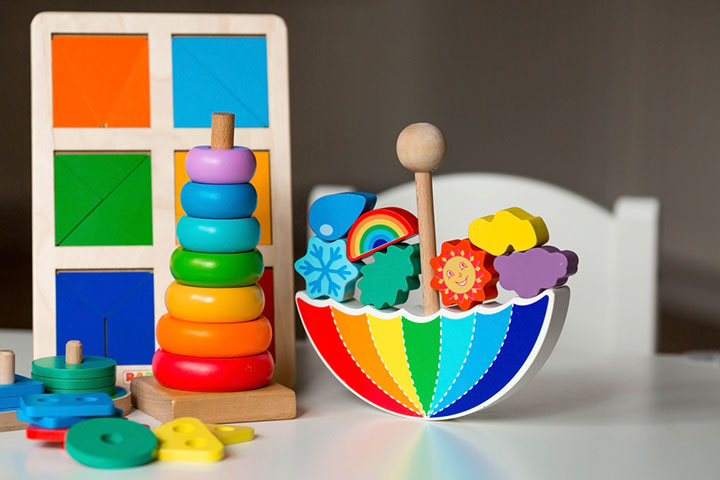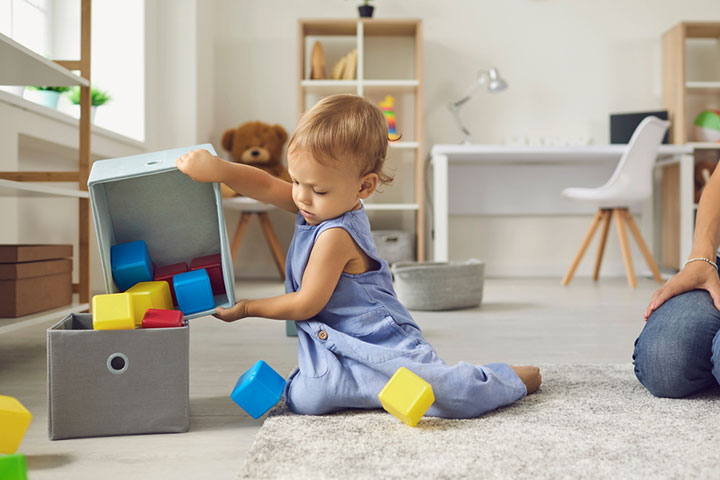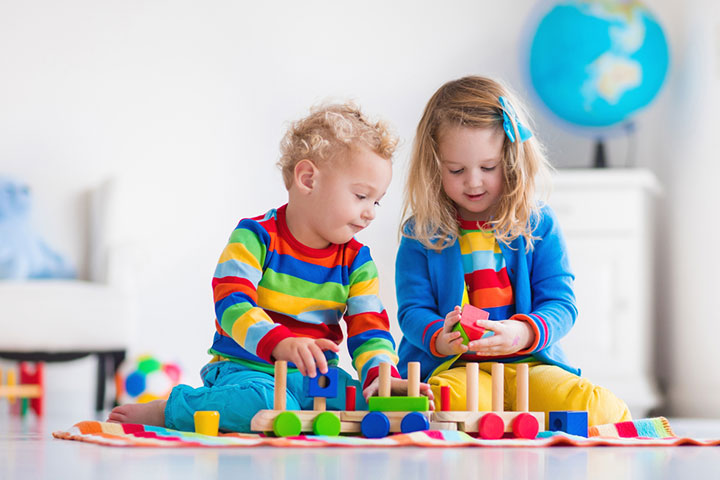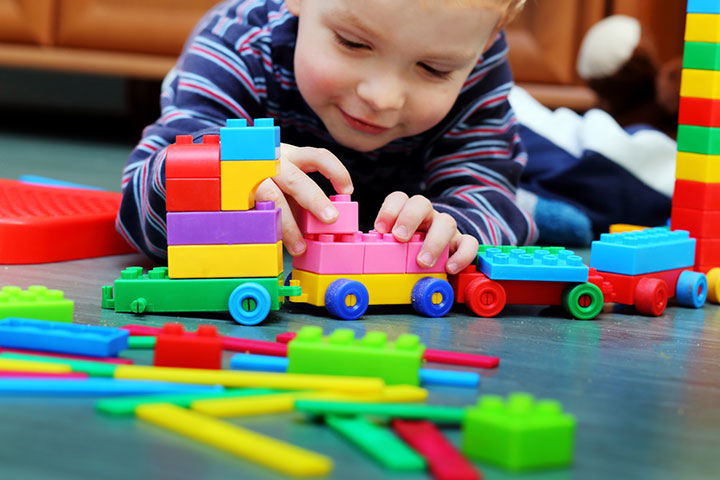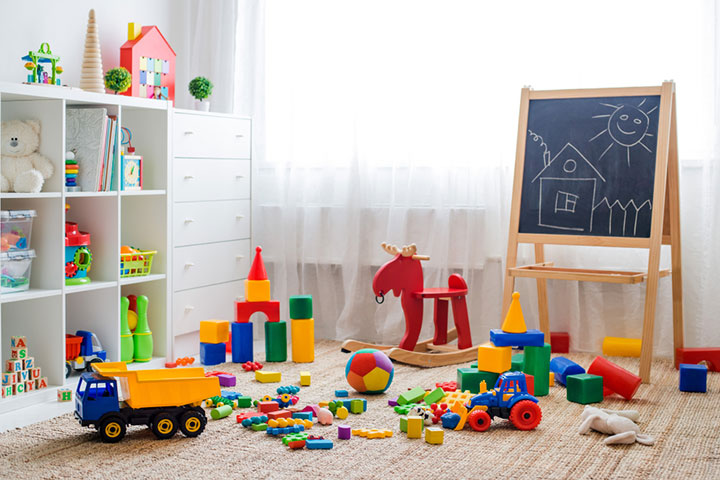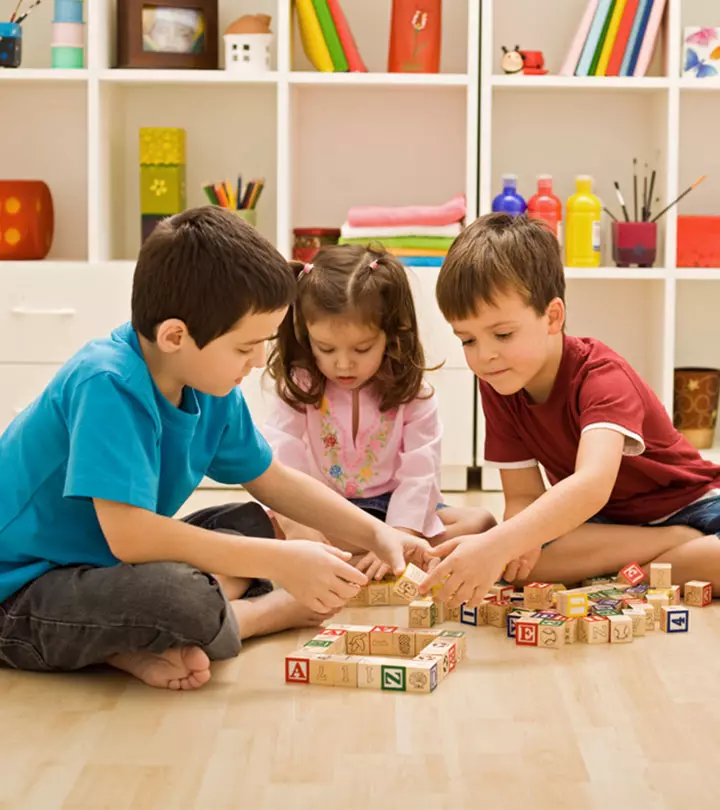
Image: Shutterstock.
‘Loose parts play’ is a term used to describe the type of play that encourages children to use their imaginations, creativity, problem-solving skills, and other higher-order cognitive abilities (1). It requires a wide variety of materials to be mixed, shuffled, rearranged, transported, dismantled and rebuilt in various ways. The most useful aspect of this type of play is its simplicity. It requires nothing except your own imagination and inventiveness. Your children play by making their own products out of the given supplies. Here in this article is why loose play parts are good for play for toddlers.
Note: Even though loose parts play help build your child’s cognitive skills, they can still be a choking hazard. You should never leave your child unattended and unsupervised while they play with toys with detachable parts.
1. They Will Never Be Bored
Several things can be made from the same raw materials. For this reason, it will never get monotonous for the kid. That same assortment of sticks & circles that fashioned a swing the day before might also be used to create an airplane today!
2. Encourages Creative Thinking
The best benefit of these toys, by far, is the way they encourage imaginative play. The child doesn’t need to follow any specific rules when playing. As a result, individuals can create novel items based on their newly acquired insights. They act out made-up scenarios, use made-up voices, create tiny versions of their surroundings, and generally inhabit a fantasy world.
3. Develops Motor Skills
The child’s gross and fine motor abilities are enhanced as they construct, transport, carry, balance, pick, fiddle, place, and sort things (2). This is a good development for younger kids.
4. Helps Solve Modern Day Problems
Several factors influence the present generation’s growth and development. Some of the factors include smart gadgets, fresh air, and family bonding time. Flaws and inconsistencies are sometimes useful in resolving such problems. It helps the child transition from the virtual to the physical world. It is the kid who chooses what to do and writes their own stories. Children’s playtime conversations highlight the value of two-way communication.
5. Helps In Problem-Solving
When the child first begins playing with loose components, they may encounter various challenges. The length and width of various components will vary. How exactly do you plan to put them together to make something new? The kid’s capacity to reason through problems will be honed by all the muddles.
6. Boosts Emotional Satisfaction
Anybody, young or old, enjoys a sense of accomplishment after checking off a list of to-dos. The child experiences elation because they have created something amazing out of the random components.
7. Expands Focus And Concentration
Kindergarteners’ focus may be honed through the usage of loose components. Most kids are captivated by the opportunity to participate in the whole creative procedure. A concept is developed, necessary components are gathered, and the structure is assembled.
8. Provides Encouragement
A child’s sense of worth and confidence rises as the toys consistently engage them in creative endeavors. They begin to believe that they can handle anything that comes their way. Playing out scenes from novels and speeches helps them feel more grounded in reality.
9. Teaches Independence
Preschoolers can learn the value of self-sufficiency through the use of loose pieces, which is another perk. The ability to imagine a situation, make models connected to it, and act out stories gives a child a sense of independence. They gradually come to trust in their own abilities.
10. Where To Find Loose Parts?
Do you realize that there are both big and small parts and missing pieces hiding in your home? They surround you on all sides. Loose components can be found in a variety of storage containers around the house, including kitchen cabinets, other closets, toy boxes, hobby boxes, recycle bins, and so on. Certain outdoor areas, such as construction or development project sites, may also have items that pique your attention. Apart from that, you may go to places like garage sales, second-hand stores, recycling facilities, hardware stores, and local commercial hubs to acquire some materials.
It’s not simple to let your child play with a bunch of loose pieces. If you want your child to take an interest in something, you’ll need to put in a lot of time with them at first. The suggestion here is to introduce the free-form play to young children as soon as possible. Do not become impatient, either. A child needs time to grow and develop in both learning and love. Provide them with a lot of options to combine and match. So what is your take on children playing with loose play parts? Let us know in the comments section!

